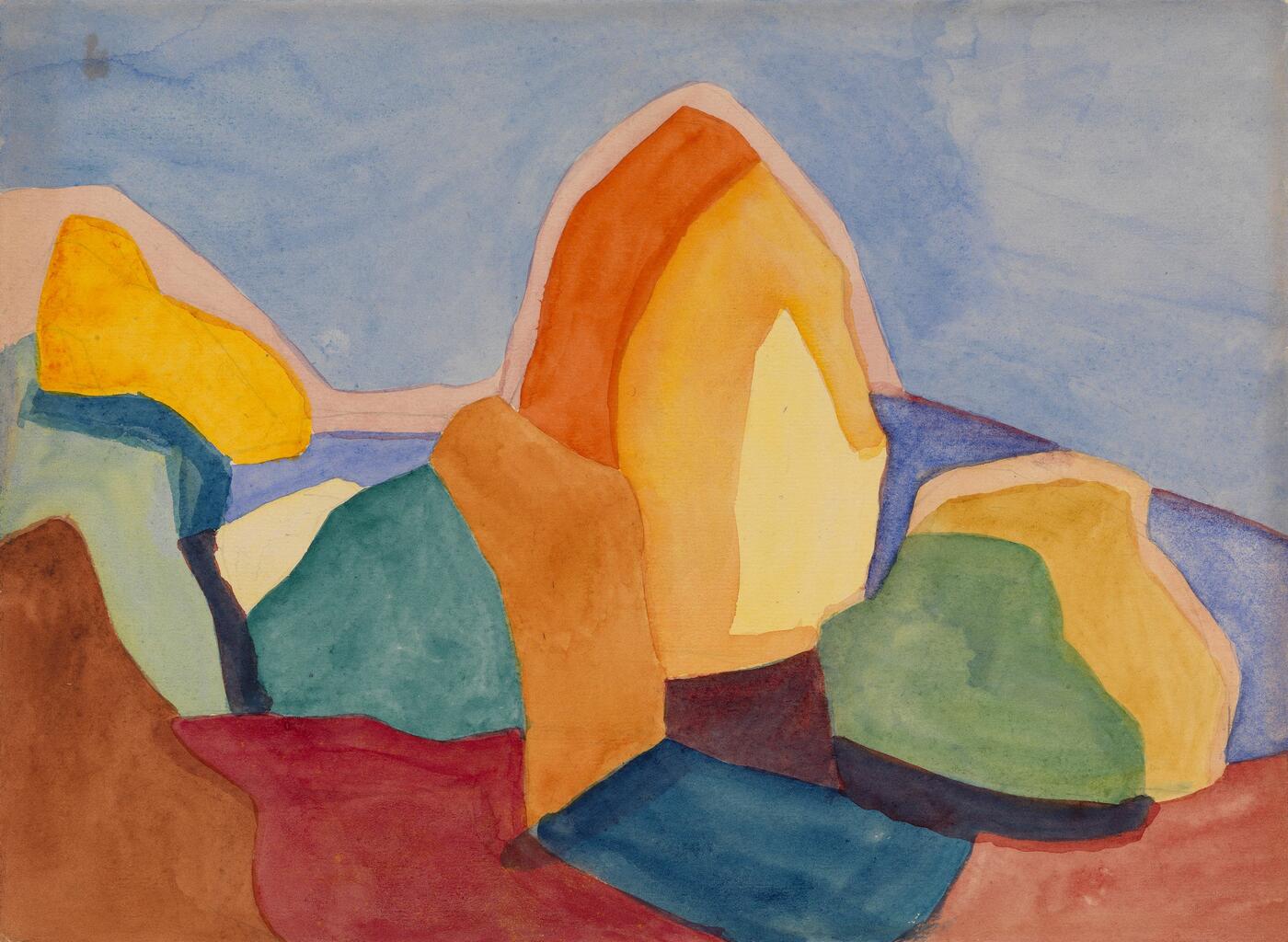MacDougall's Russian Art Auctions 1-2 Dec 2010
1 December 2010

* 39. ENDER, KSENIA 1894-1955
Landscape inscribed in Cyrillic "23 August 1927/Odessa" on the reverse
Pencil and watercolour on paper, 24 by 32.5 cm
25,000-30,000 GBP
Provenance: The George Costakis Collection, until 1977.
Collection of Ya. E. Rubinshtein, Moscow, inscription on the reverse.
Related Literature: For a similar work, see Anna Kafetsi (ed.), Russian Avant-Garde 1910-1930. The G. Costakis Collection, Athens, 1995, ill. 243.
The Ender sisters, Maria (1897, St Petersburg — 1942,
Leningrad) and Ksenia (1894, Slutsk — 1955, Leningrad) studied
from 1918 to 1922 at the Petrograd State Free Art Workshops of
Mikhail Matiushin in the Spatial Realism department, and
worked in the department of organic culture at GINKhUK (the
State Institute of Artistic Culture) also under the direction of
Matiushin, Maria from 1923 to 1926 and Ksenia 1923 to 1924.
Mikhail Matiushin was an artist, musician, composer, art re-
searcher, one of the leading lights of the Russian avant-garde and
inventor of the theory of “broadened observation”. In the depart-
ment of organic culture at GINKhUK a group of artists,
Matiushin’s students, formed an association which they called
ZOR-VED (an abbreviation of the words ‘seeing’ and ‘knowing’).
Matiushin spoke of a new truth existing in art, a non-figurative
figuration. “Figures do not leave the field of vision, they just
change into a new form.”
For the artists of the avant-garde, the concept of realism did not
mean copying nature. It was no accident that the word “realism”
acquired the attribute “spatial”. It became synonymous with a
new idea of the universe, of connections with nature. The group’s
investigations were mainly concentrated on the problem of the
perception of colour in space, of the influence of colour on form
and on the connections between colour and sound. The Ender
sisters were active participants.
Maria Ender conducted an independent project researching colour,
ran the department researching the use of peripheral perception of
colour and form and gave 24 lectures at the department’s meetings.
She prepared for publication the articles The Laws of Reproduction of
Colour Form, Chevreul’s Law of Simultaneous Contrast and Its Relationship to
the Principle of Broadened Observation, Colour and Colour Combining, Space
and Form and On Supplementary Form. She taught colour studies at the
State Art and Industry Technical College (1930), and at the
Leningrad Institute of Proletarian Visual Arts (1930–1932). Maria
Ender actively collaborated with Matiushin in preparing a colour
handbook for publication in 1932. She took part in designing the
Soviet pavilion at the World Exposition in Paris in 1937 and the
World’s Fair in New York in 1939.
Ksenia also wrote reports at the Institute on various subjects.
From 1925 to 1927 she worked as a scientific collaborator at the
Decorative Institute. Due to poor health she gave up painting early on and in the 1930s worked as a designer in an engineer’s office. Both sisters participated in the Exhibition of Pictures by Petrograd
Artists of All Movements in Petrograd in 1923, and in the 14th
Venice Biennale International Art Exhibition in 1924. Landscapes
occupy a major place in the oeuvre of Ksenia Ender and it is in
these that she uses her experience in “broadened observation”:
the purification of light and the revelation of its luminescence,
the colour-form connection with the surroundings through “interlinking” colour. The artist highlights simple colour forms which
create a slightly slowed-down, peaceful compositional rhythm.
Maria Ender was one of the leading theoreticians of the new spatial realism. Her compositions were more dynamic, complex and
delicate in their colour characteristics. By finding the graphic
“formulae” of objects in nature, stripping all detail, all unnecessary features from their depictions, both artists preserved a connection with the natural origin.
Liudmila Vostretsova, The State Russian Museum, St Petersburg
Notes on symbols:
* Indicates 5% Import Duty Charge applies.
Ω Indicates 20% Import Duty Charge applies.
§ Indicates Artist's Resale Right applies.
† Indicates Standard VAT scheme applies, and the rate of 20% VAT will be charged on both hammer price and premium.